By Gamie Gundran
Petersime Incubation Consultant
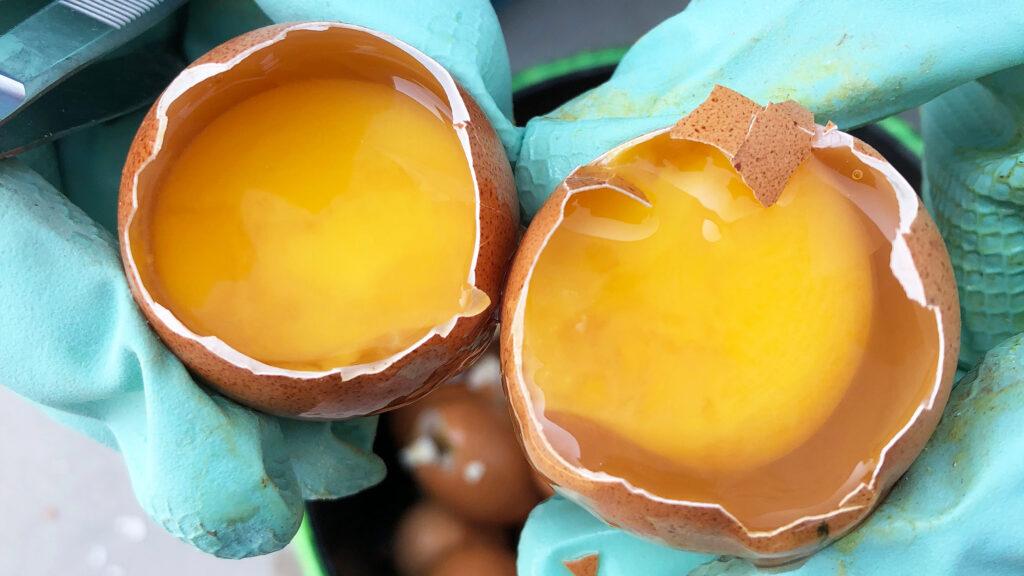
Hatching egg quality has a significant impact on hatchability and chick quality. By making egg quality control a part of the routine procedures in your hatchery, you will be able to improve your hatch results. Although it is fairly easy to evaluate external egg quality by checking the egg’s exterior, it can be more challenging to perform deeper checks on a regular basis. This article describes the most important interior quality factors to help you assess internal egg quality.
Whyperform a deeper check?
A hatching egg is a protected space for the chicken embryo to develop in.Insidethe egg are all the essential nutrients and mechanisms to support anoptimal development and growth of the embryo. However, while the egg is formed in the reproductive tract of the hen, various events can occur that cause irregularities in eggs. Some of these irregularities affect the internal quality of the egg, which is why it is important to perform bothexternaland internal quality controls. An overview of the most important interior quality factors is given below.
1. Egg fertility
A first parameter is whether the egg has been fertilised or not. Hatching eggs can be analysed before incubation on arrival at the hatchery to distinguish fertile eggs from infertile eggs.This requires a specific technique that needs to be built up by practice. When applied, however, a disadvantage of the techniqueis the loss of valuable hatching eggs due to the destructive procedure. A fertile egg is characterised by a blastoderm that has a clearly defined ring-shaped appearance (seen as a white symmetrical ring with a clear area in the centre). If for whatever reason the egg is infertile, a blastodisc is visible with a ruffled, irregular shape. A blastodisc is also lighter in colour and smaller in size compared to ablastoderm.It is a well-known fact that the fertility goes down as flock age increases, but a sudden drop in fertility could be an indication of a breeder problem and a reason to perform deeper analysis.
Having said that, it is important to ensure acorrect handling and storage of hatching eggs, so good-quality embryos can remain in perfect condition. An embryo’s cell division begins from the moment the egg is fertilised. After point of lay, the blastoderm consists of approximately 60,000 cells.Inappropriate handling and storage at the breeder farm, during transportation or at the hatchery will dramatically reduce the chances of producing a healthy day-old chick from that same egg.
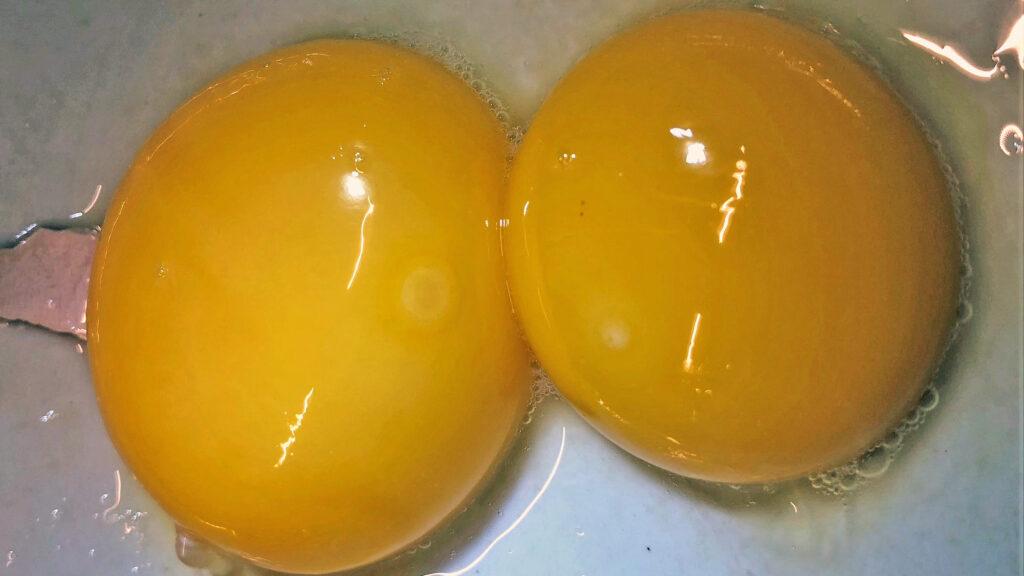
A fertile egg with blastoderm on the left; an infertile egg with blastodisc on the right
2. Yolk quality
The yolk is an essential part of the hatching egg and constitutes an important food source for the developing embryo. The yolk’s condition can be investigated by performing a fresh egg breakout analysis. The yolk must be clear and not mottled. Mottled yolk is an indicator of stress at the breeder farm. Bad yolk increases the risk of early embryonic mortality during incubation.

An example of mottled yolk with cloud-like spots underneath the vitelline membrane
3. Albumen quality
The albumen (egg white) provides essential proteins for the developing embryo. It also protects the embryo from any bacteria that could get into the egg. The most common test for albumen quality – conducted during a fresh egg breakout analysis – was invented byRaymond Haugh. After weighing, an egg is broken onto a flatsurface.Amicrometercaliper is used todetermine the height of the albumen surrounding the yolk.The height, correlated with theweight, determines the Haugh Unit. The higher the number, the better the albumen quality of the egg.

The Haugh Unit can be calculated by using below formula:
HU = 100 * Log10(H – 1.7W0.37 + 7.6)
HU: Haugh Unit
H: observed height of albumen (in millimetres)
W: egg weight(in grams)
| Calculated Haugh Unit | Egg quality |
| 90 and above | Excellent |
| 80 – 89 | Very good |
| 70 – 79 | Fair |
| 69 and below | Poor |
4. Vitelline membrane strength
The vitelline membrane encloses the yolk and keeps it separate from the albumen. Keeping this protective membrane intact throughout embryo development in the egg is crucial to its survival. This membrane should not be wrinkled – characterised by small scratches on the membrane surrounding the yolk. If the vitelline membrane is damaged or broken, the yolk can mix with the albumen, ultimately leading to embryonic mortality.
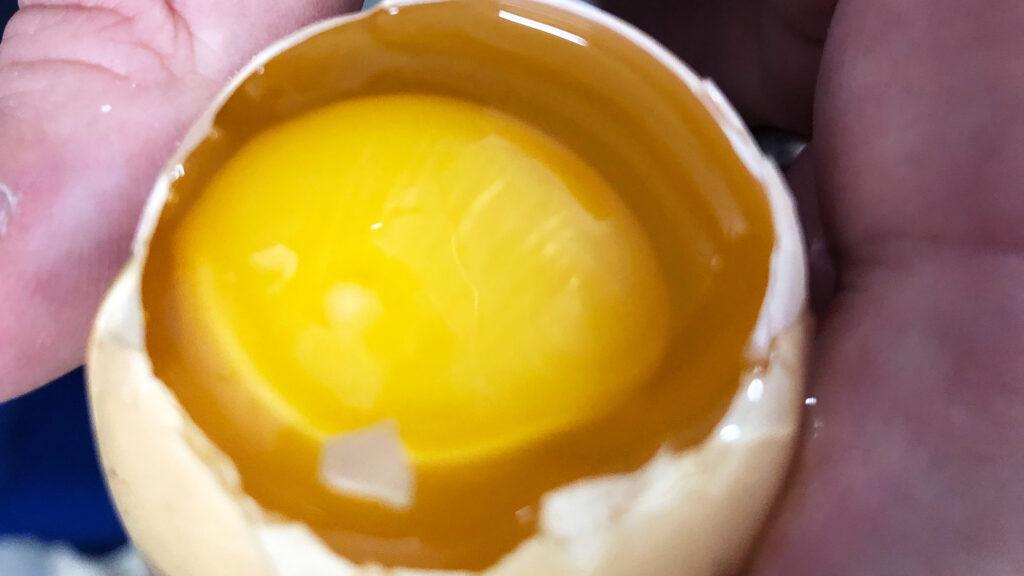
An egg with a damaged vitelline membrane
5. Pathogen-free eggs
There are some important groups of pathogens that can be problematic: bacteria, Escherichia coli (E.coli), Salmonella, Pseudomonas and Aspergillus. They hinder the development of the embryo and can even destroy the egg during incubation. That is why it is extremely important that hatching eggs are free from pathogens.
Although it is impossible to check an egg for pathogens when it is fresh (unless a laboratory analysis is undertaken), their presence will be clearly revealed after hatch. The contamination level can vary between 0-0.5% for young to middle-aged flocks (25-35 weeks) and between 1-2% for flocks older than 36 weeks (depending on the breeder farm management). By conducting a post-hatch breakout analysis, the level of contamination can be determined. A sudden increase in contamination characterised by exploders (‘bangers’) can indicate egg management issues either at the farm or at the hatchery. The hatchery breakout data sheet containing the accurate number of contaminated eggs is to be shared with the farm team and hatchery team to take appropriate action. Flocks with contamination records higher than 0.5% should get special attention with regard to egg handling and sanitation procedures.
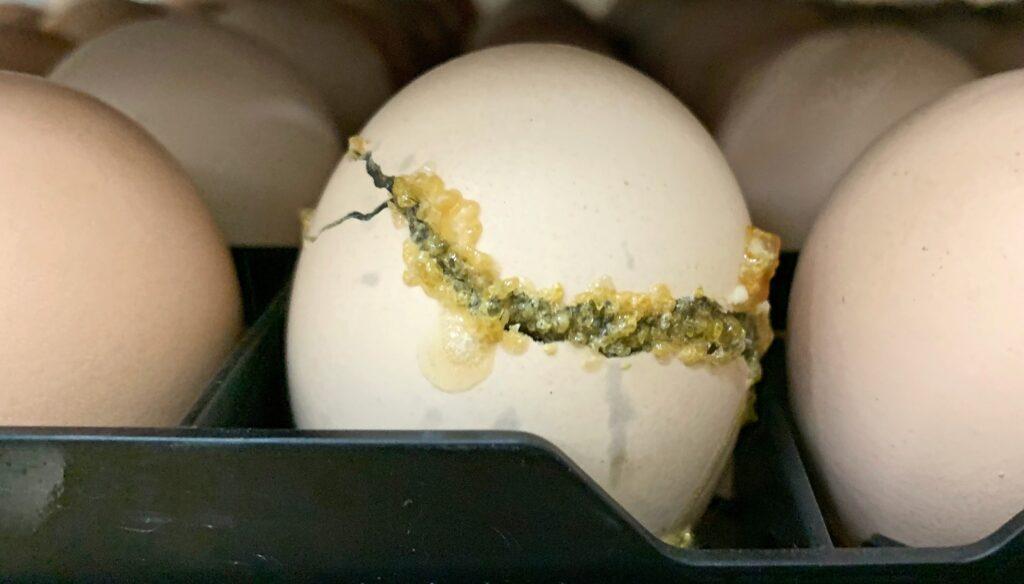
An egg contaminated with Pseudomonas
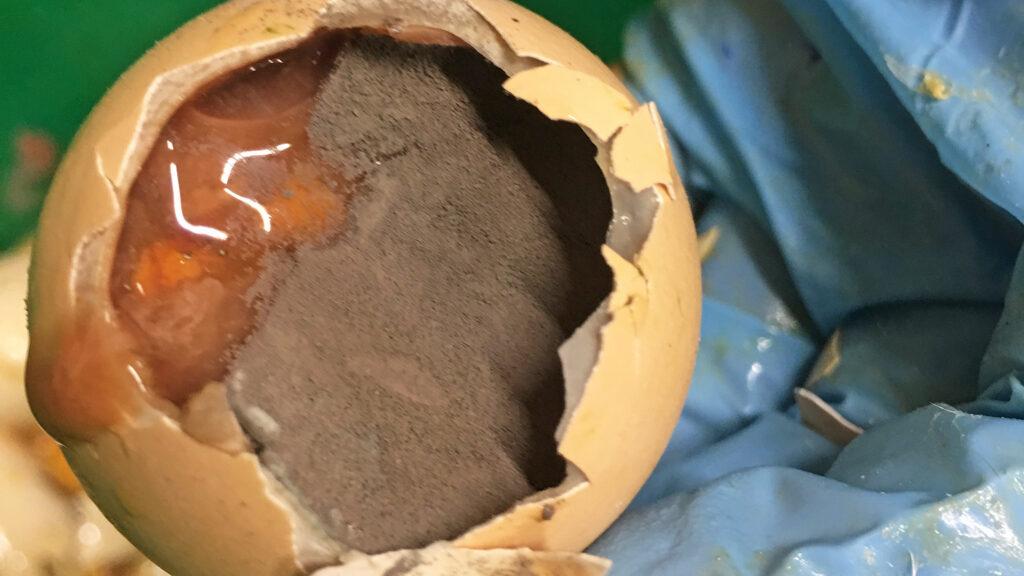
An egg contaminated with Aspergillus
In conclusion
It is necessary to evaluate internal egg quality on a routine basis. Ensuring that there are procedures in place to evaluate the internal quality of incoming hatching eggs will greatly assist in safeguarding the hatchery from quality issues. If you want to know more about hatching egg quality, breakout analyses or other best practices for your hatchery, contact training@petersime.com to attend one of our training programmes.